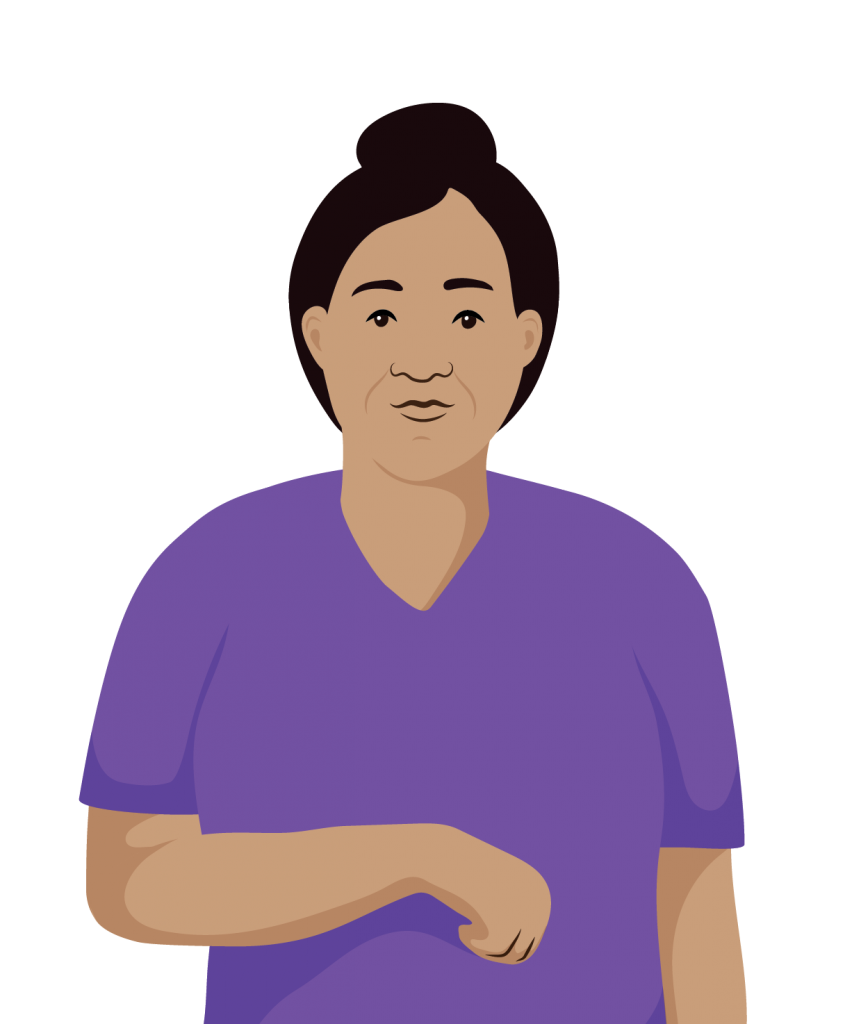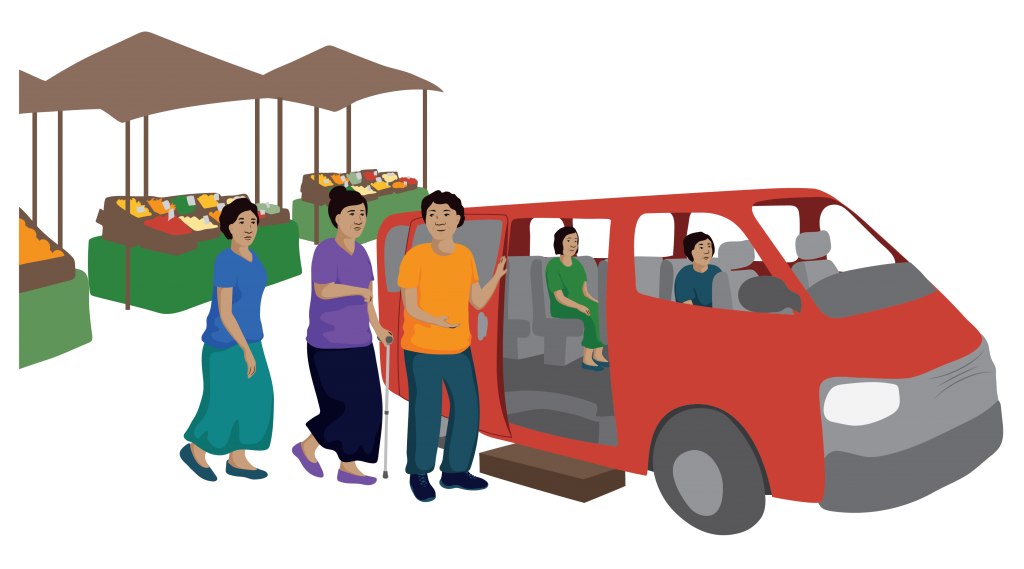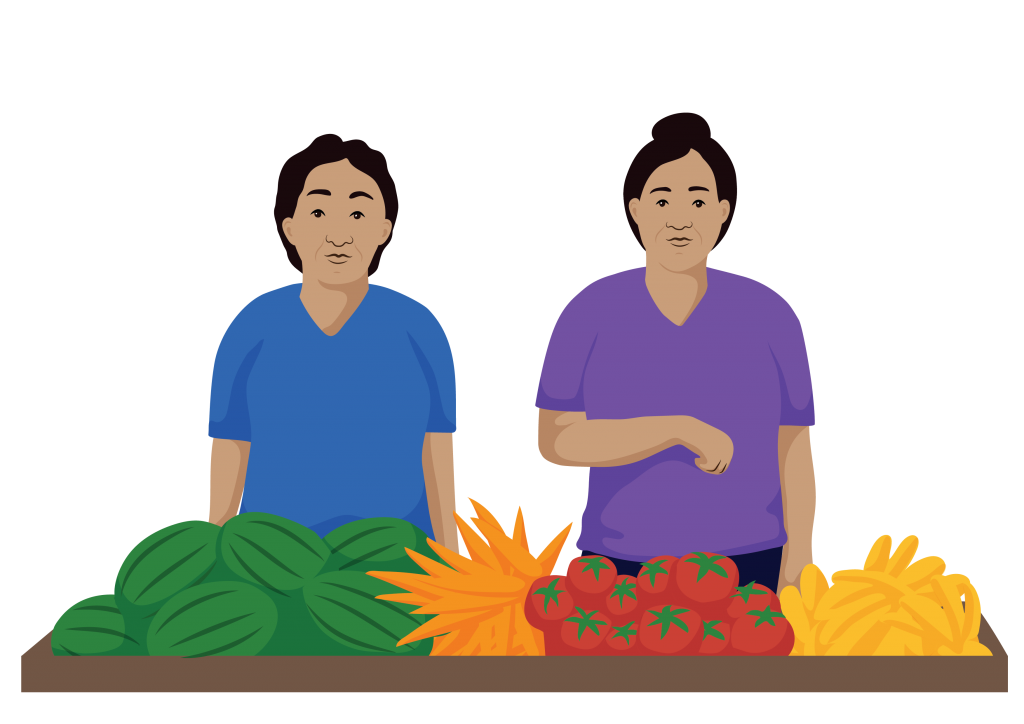Supporting people to use assistive products in the community
For many people, access to assistive products is an important part of being able to participate in activities that they want or need to do.
However, even with the right assistive product, people may face barriers that continue to limit their participation.
These barriers may include:
- An environment that is not accessible
- Social stigma and discrimination
- A lack of accessible information
- A lack of supportive services or policies.
Everybody has a role to play to ensure that people who use assistive products are able to participate in the activities that they want or need to do, on an equal basis with others.

Meet Lei.
Lei has had a stroke and lives at home with her daughter. The right side of Lei’s body is weak, and sometimes her speech is not clear. She uses a walking stick to help her move around.
Before her stroke, Lei was active in the community and often sold vegetables at the local market. However, after her stroke she found it difficult to get into the bus to go to the market. She also noticed some of the women at the market stopped including her in their conversations and activities.

Lei felt isolated and didn’t go to the market as often. However, one day the bus driver showed Lei a small portable step that he had made, which made it much easier for her to get on and off the bus.

Lei’s friend at the market also supported her to talk to the other women and explained that Lei could still understand and take part in conversations, but needed more time to speak clearly. The other women understood and included her again in their activities and conversations, making sure they gave her as much time as she needed to respond.
Lei once again sells her vegetables at the market regularly, and enjoys socialising with the other women.
Question
1. What barriers to participation did Lei face?
1. Lei faced:
- Physical barriers (she found it hard to get into the bus)
- Attitude barriers (the women at the market excluded Lei from their conversations and activities).
2. How were they overcome? What role did different people play?
2. Barriers were overcome with the support of people in her community:
- The bus driver helped Lei to overcome physical barriers by making a portable step, so that she could get on and off the bus.
- Lei’s friend supported her to talk to the other women, so that they understood that Lei can still take part in their conversations and activities.
You have completed Lesson four!
If you have any questions or comments, post them on the discussion forum.

